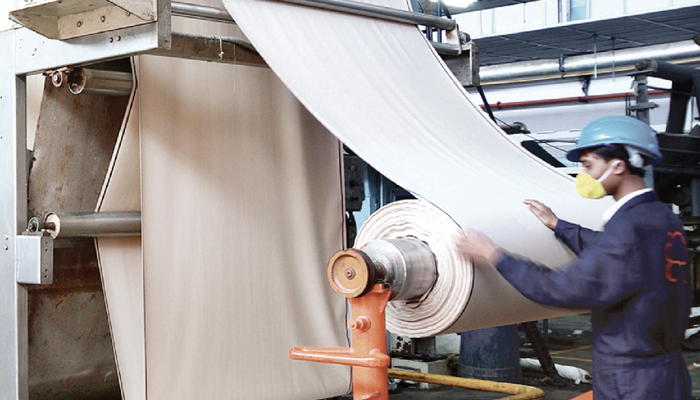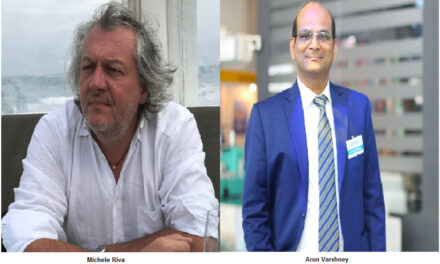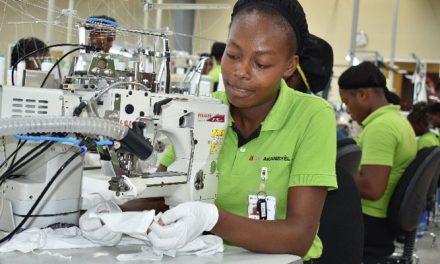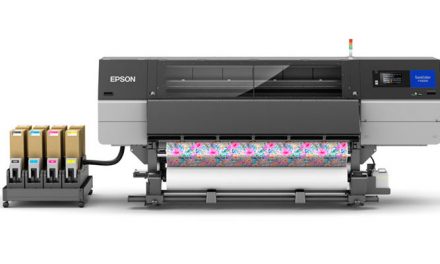
The Multi-Fibre Arrangement (MFA) has governed international trade in textiles and clothing since 1974. The MFA enabled developed nations, mainly the USA, European Union and Canada to restrict imports from developing countries through a system of quotas. The Agreement on Textiles and Clothing (ATC) to abolish MFA quotas marked a significant turnaround in the global textile trade. The ATC mandated progressive phase out of import quotas established under MFA, and the integration of textiles and clothing into the multilateral trading system before January 2005.
The agreement on textiles and clothing
ATC is a transitory regime between the MFA and the integration of trading in textiles and clothing in the multilateral trading system. The ATC provided for a stage-wise integration process to be completed within a period of ten years (1995-2004), divided into four stages starting with the implementation of the agreement in 1995. The product groups from which products were to be integrated at each stage of the integration included (i) tops and yarns; (ii) fabrics; (iii) made-up textile products; and (iv) clothing.
The ATC mandated that importing countries must integrate a specified minimum portion of their textile and garment exports based on total volume of trade in 1990, at the start of each phase of integration. In the first stage, each country was required to integrate 16 per cent of the total volume of imports of 1990, followed by a further 17 per cent at the end of first three year and another 18 per cent at the end of third stage. The fourth stage would see the final integration of the remaining 49 per cent of trade.
Global trade in textile and clothing
World trade in textiles and clothing amounted to $385 bn in 2003, of which textiles accounted for 43 per cent ($169 bn) and the remaining 57 per cent ($226 bn) for clothing. Developed countries accounted for little over one-third of world exports in textiles and clothing. The shares of developed countries in textiles and clothing trade were estimated to be 47 per cent ($79 bn) and 29 per cent, ($61bn) respectively.
Import trends in the US
In 1990, restrained or MFA countries contributed as much as 87 per cent ($29.3 bn) of total US textile and clothing imports, whereas Caribbean Basin Initiative (CBI), North American Free Trade Area (NAFTA), Africa Growth and Opportunity Act (AGOA) and ANDEAN countries together contributed 13 per cent ($4.4 bn). Thereafter, there has been a decline in exports by restrained countries; the share of preferential regions more than doubled to reach 30 per cent ($26.9 bn) of total imports by the US.
The composition of imports of clothing and textiles by the US in 2003 was 80 per cent ($71 bn) and 20 per cent ($18 bn), respectively. Asia was the principal sourcing region for imports of both textiles and clothing by the US. Latin American region stood at second position with a share of 12 per cent ($2.2 bn) and 26 per cent ($18.5 bn), respectively, for textiles and clothing imports, by the US. In most of the quota products imported by the US, India was one of the leading suppliers of readymade garments in the US. Though China is a biggest competitor, the unit prices of China for most of these product groups were high and thus provide opportunities for the Indian business.
Import trends in the EU
EU overtook the US as the world’s largest market for textiles and clothing. Intra-EU trade accounted for about 40 per cent ($40 bn) of total clothing imports and 62 per cent ($32.5 bn) of total textile imports by EU. Asia dominates the EU market in both clothing and textiles, with 30 per cent ($30 bn) and 17 per cent ($8 bn) share, respectively. Central and East European countries hold a market share of 11 per cent ($11.3 bn) in clothing and 7.5 per cent ($4 bn) in textiles imports of the EU.
As regards preferential suppliers, the growth of trade between the EU and Mediterranean countries, especially Egypt and Turkey, was highest in 2003. As regards individual countries, China accounted for little over 5 per cent ($2.8 bn) of the EU’s imports of textiles and over 12 per cent ($12.4 bn) of clothing imports. In the EU market also, India is a leading supplier for many of the textile products. It is estimated that Turkey would emerge as a biggest competitor for both India and China. However, with regard to unit prices, India appears to be lower than both Turkey and China in many of the categories.
Import trends in Canada
Amongst the leading suppliers of textiles and clothing to Canada, the US had the highest share of over 31 per cent ($8.4 bn), followed by China (21per cent– $1.8 bn) and the EU (8 per cent – $0.6 bn). India was ranked at fourth position and was ahead of other exporters like Mexico, Bangladesh and Turkey, with a market share of 5.2 per cent ($0.45 bn).
Potential gains
It may be noted that clothing sector would offer higher gains than the textile sector, in the post MFA regime. Countries like Mexico, CBI countries, many of the African countries emerged as exporters of readymade garments without having much of textile base, utilising the preferential tariff arrangement under the quota regime. Besides, countries like Bangladesh, Sri Lanka, and Cambodia emerged as garment exporters due to cost factors, in addition to the quota benefits.
It may be said that countries like China, the US, India, Pakistan, Uzbekistan and Turkey have resource based advantages in cotton; China, India, Vietnam and Brazil have resource based advantages in silk; Australia, China, New Zealand and India have resource based advantages in wool; China, India, Indonesia, Taiwan, Turkey, the US, Korea and few CIS countries have resource based advantages in manmade fibres. In addition, China, India, Pakistan, the US, Indonesia has capacity based advantages in the textile spinning and weaving.
China is cost competitive with regard to manufacture of textured yarn, knitted yarn fabric and woven textured fabric. Brazil is cost competitive with regard to manufacture of woven ring yarn. India is cost competitive with regard to manufacture of ring-yarn, O-E yarn, woven O-E yarn fabric, knitted ring yarn fabric and knitted O-E yarn fabric. According to Werner Management Consultants, the US, the hourly wage costs in textile industry is very high for many of the developed countries. Even in developing economies like Argentina, Brazil, Mexico, Turkey and Mauritius, the hourly wage is higher as compared to India, China, Pakistan and Indonesia.
From the above analysis, it may be concluded that China, India, Pakistan, Taiwan, Hong Kong, Brazil, Indonesia, Turkey and Egypt would emerge as winners in the post quota regime. The market losers in the short term (1-2 years) would include CBI countries, many of the sub-Saharan African countries, Asian countries like Bangladesh and Sri Lanka.
The market losers in the long term (by 2014) would include high cost producers, like the EU, the US, Canada, Mexico, Japan and many East Asian countries. The determinants of increase / decrease in market share in the medium term would however depend upon the cost, quality and timely Review of Indian Textiles and Clothing Industry. The textiles and garments industry is one of the largest and most prominent sectors of Indian economy, in terms of output, foreign exchange earnings and employment generation. Indian textile industry is multi-fibre based, using delivery. In the long run, there are possibilities of contraction in intra-EU trade in textile and garments, reduction of market share of Turkey in the EU and market share of Mexico and Canada in the US, and thus provide more opportunities for developing countries like India.
It is estimated that in the short term, both China and India would gain additional market share proportionate to their current market share. In the medium term, however, India and China would have a cumulative market share of 50 per cent, in both textiles and garment imports by the US. It is estimated that India would have a market share of 13.5 per cent in textiles and 8 per cent in garments in the US market. With regard to the EU, it is estimated that the benefits are mainly in the garments sector, with China taking a major share of 30 per cent and India gaining a market share of 8 per cent. The potential gain in the textile sector is limited in the EU market considering the proposed further enlargement of the EU. It is estimated that India would have a market share of 8 per cent in the EU textiles market as against the China’s market share of 12 per cent.
Review of Indian textiles and clothing industry
The textiles and garments industry is one of the largest and most prominent sectors of the Indian economy, in terms of output, foreign exchange earnings and employment generation. Indian textile industry is multi-fibre based, using cotton, jute, wool, silk and mane made and synthetic fibres. In the spinning segment, India has an installed capacity of around 40 mn spindles (23 per cent of world), 0.5 mn rotors (6 per cent of world). In the weaving segment, India is equipped with 1.80 mn shuttle looms (45 per cent of world), 0.02 mn shuttle less looms (3 per cent of world) and 3.90 mn handlooms (85 per cent of world).
The organised mill (spinning) sector recorded a significant growth during the last decade, with the number of spinning mills increasing from 873 to 1564 by end March 2004. The organised sector accounts for production of almost all of spun yarn, but only around 4 per cent of total fabric production. In other words, there are little over 200 composite mills in India leaving the production of fabric and processing to the decentralised small weaving and processing firms. The Indian apparel sector is estimated to have over 25,000 domestic manufacturers, 48,000 fabricators and around 4,000 manufacturer-exporters. Cotton apparel accounts for the majority of Indian apparel exports.
Textiles and garments exports from India
The share of textiles and garments exports in India’s total exports in the year 2003-04 stood at about 20 per cent, amounting to $12.5 bn. The quota countries, the US, the EU and Canada accounted for nearly 70 per cent of India’s garments exports and 44 per cent of India’s textile exports. Amongst non-quota countries, UAE is the largest market for Indian textiles and garments; UAE accounted for 7 per cent of India’s total textile exports and 10 per cent of India’s garments exports. In terms of products, cotton yarn, fabrics and made-ups are the leading export items in the textile category. In the clothing category, the major item of exports was cotton readymade garments and accessories. However, in terms of share in total imports by the EU and the US from India, these products hold relatively lesser share than products made of other fibres, thus showing the restrain in this category.
Critical factors that need attention
Though India is one of the major producers of cotton yarn and fabric, the productivity of cotton as measured by yield has been found to be lower than many countries. The level of productivity in China, Turkey and Brazil is over 1 tonne / ha., while in India it is only about 0.3 tonne / ha. In the manmade fibre sector, India is ranked at fifth position in terms of capacity. However, the capacity and technology infusion in this sector need to be further enhanced in view of the changing fibre consumption in the world. It may be mentioned that the share of cotton in world fibre demand declined from around 50 per cent (14.7 mn tonne) in 1982 to around 38 per cent (20.12 mn tonne) in 2003, while the share of manmade fibre has increased from 44 per cent (13.10 mn tonne) to around 60 per cent (31.76 mn tonne) over the same period.
Apart from low cost labour, other factors that are having impact on final consumer cost are relative interest cost, power tariff, structural anomalies and productivity level (affected by technological obsolescence). A study by International Textile Manufacturers Federation revealed high power costs in India as compared to other countries like Brazil, China, Italy, Korea, Turkey and the US. Percentage share of power in total cost of production in spinning, weaving and knitting of ring and O-E yarn for India ranged from 10 per cent to 17 per cent, which is also higher than that of countries like Brazil, Korea and China. Percentage share of capital cost in total production cost in India was also higher ranging from 20 per cent to 29 per cent as compared to a range of 12 to 26 per cent in China.
In India, very few exporters have gone in for integrated production facility. It is noted that countries that would emerge as globally competitive would have significantly consolidated supply chain. For instance, competitor countries like Korea, China, Turkey, Pakistan and Mexico have a consolidated supply chain. In contrast, apart from spinning, the rest of the activities like weaving, processing, made-ups and garmenting are all found to be fragmented in India. Besides, the level of technology in the Indian weaving sector is low compared to other countries of the world. The share of shuttle less looms to total loomage in India is 1.8 per cent as compared to Indonesia (10 per cent), Bangladesh (10 per cent), Sri Lanka (12 per cent), China (14 per cent) and Mexico (29 per cent).
The supply chain in this industry is not only highly fragmented but is beset with bottlenecks that could very well slow down the growth of this sector. As a result the average delivery lead times (from procurement to fabrication and shipment of garments) still takes about 45-60 days. With international lead delivery times coming down to 30-35 days, India needs to cut down the production cycle time substantially to stay in the market. Besides, erratic supply of power and water, availability of adequate road connectivity, inadequacies in port facilities and other export infrastructure have been adversely affecting the competitiveness of Indian textiles sector.
Conclusions
It is believed the quota regime has frozen the market share, providing export opportunities even for high cost producers. Thus, in the free trade regime, the pattern of imports in the quota countries would undergo changes. The issues that would govern the market share in the post quota regime would eventually be productivity, raw material base, quality, cost of inputs, including labour, design skills and operation of economies of scale. It is believed that quotas, by limiting the supply of goods have kept export prices artificially high. Thus, it is estimated that there would be price war in the post quota regime, with competitive price cuts. The price and quantity effects would depend on the efficiency in production process, supply chain management and the price elasticity of demand.
Due to the expected fall in prices, developing countries with high production cost have little choice but to compete head-on with the biggest low cost suppliers. In this process, it is presumed that there would be better resource reallocation in these economies. It is assumed that quota restrictions would continue beyond 2005 in various forms. It is also widely recognised that removal of quota may not directly provide easy and unrestricted access to developed country markets. There would be non-tariff barriers as well. Standards related to health, safety, environment, quality of work life and child labour would gain further momentum in international trade in textiles and clothing.
Strategies and recommendations
Cost competitiveness in the Indian garments sector has been restrained by limited scale operations, obsolete technology and reservation under SSI policies. While retaining its traditional cost advantages of home grown cotton and low cost labour, India needs to sharpen its competitive edge by lowering the cost of operations through efficient use of production inputs and scale operations. Besides, there are needs for rationalisation of charges, levies related to usage of export logistics to remain cost competitive. As fallout to the quota regime, there would be consolidation of production and restriction on supplying countries, which would necessarily mean improved scale operations. Indian players should also integrate to achieve operating leverage and demonstrate high bargaining power.
It is reported that Chinese textile firms have already invested heavily to expand and grab huge market share in the quota free world. In India, organised players in this sector would require huge investments to remain competitive in the quota free world. These players need to expand and integrate vertically to achieve scale operations and introduce new technologies. It is estimated that the industry would require `1.5 tr ($35 bn) new capital investment in the next ten years (by 2014) to lap the potential export opportunities of $70 bn. It is estimated that the US and the EU together would offer a market of $42 bn for Indian textiles and garments in 2014.
Technology would play a lead role in the weaving and processing, which would improve quality and productivity levels. Innovations would also be happening in this sector, as many developed countries would innovate new generation machineries that are likely to have low manual interface and power cost. Indian textile industry should also turn into high technology mode to reap the benefits of scale operations and quality. Foreign investments coupled with foreign technology transfer would help the industry to turn into high-tech mode.
Internationally, trading in textile and garment sector is concentrated in the hands of large retail firms. Majority of them are looking for few vendors with bulk orders and hence opting for vertically integrated companies. Thus, there is need for integrating the operations in India also, from spinning to garment making, to gain their attention. This would also bring down the turnaround time and improve quality. Indian players should also improve upon their soft skills, viz., design capabilities, textile technology, management and negotiating skills.
Garment manufacturing business is order driven. It would be difficult for the players to keep the workforce full time, even in lean season. This calls for changes in contract labour laws. Logistics and supply chain would also play a crucial role as timely delivery would be an important requirement for success in international trade. The logistics and supply chain management of Indian textile firms are relatively weak and needs improvement and efficiency. China has already created a world class export infrastructure. Given the volume of projections for exports by India, it may be necessary to create additional export infrastructure, especially investment for modernization of ports. In addition, India needs to invest for creating brand equity, supply chain management and apparel industry education.
To sum up, the ability of Indian textile industry to take advantage of quota phase-out would depend upon their ability to enhance overall competitiveness through exploitation of economies of scale in manufacturing and supply chain. The need of the hour therefore is to evolve a well chalked out strategy, aimed at improvement in the levels of productivity and efficiency, quality control, faster product innovation, quick response to changes in consumer preferences and the ability to move up in the value chain by building brand names and acquiring channels of distribution so as to outweigh the advantages of competitors in the long run.


















